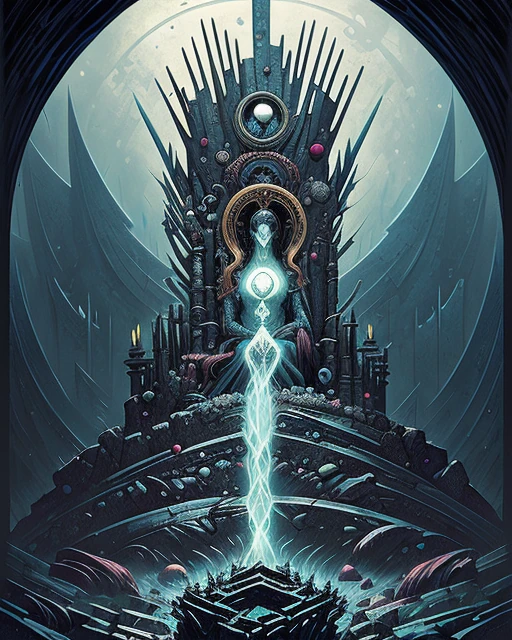In the ever-evolving world of non-fungible tokens (NFTs), choosing the right platform is crucial for both creators and collectors. With several blockchains vying for dominance, the question “What is the biggest NFT blockchain?” becomes central to navigating this dynamic landscape. This article delves deeper, exploring the contenders, their strengths, weaknesses, and the ever-shifting power dynamics in the NFT realm.
Ethereum: The OG Giant
Claim to fame: The undisputed pioneer, Ethereum boasts a staggering 72.3% market share and houses iconic collections like CryptoPunks and Bored Ape Yacht Club. Its ERC-721 standard paved the way for NFT development, attracting major marketplaces like OpenSea and fostering a vibrant community.
Strengths:
- Established ecosystem: With years of development, Ethereum offers a mature infrastructure, diverse tools, and a wealth of established projects.
- Security: Backed by a robust proof-of-work consensus mechanism, Ethereum prioritizes security, crucial for high-value assets like NFTs.
- Decentralization: Ethereum remains highly decentralized, resisting centralized control and ensuring neutrality.
Weaknesses:
- Scalability: The network often suffers from congestion, leading to high transaction fees and slow processing times.
- Energy concerns: Proof-of-work consumes significant energy, raising environmental concerns and potentially hindering future mainstream adoption.
Solana: The Speed Demon
Claim to fame: Solana challenges Ethereum’s dominance with its lightning-fast transactions and significantly lower fees. Its proof-of-history consensus mechanism enables scalability, attracting NFT projects seeking a smooth user experience.
Strengths:
- Speed and scalability: Transactions on Solana are incredibly fast and affordable, making it ideal for high-volume NFT activities.
- Growing ecosystem: The Solana NFT ecosystem is rapidly expanding, attracting prominent marketplaces like Magic Eden and innovative projects.
- Energy efficiency: The proof-of-history mechanism consumes significantly less energy compared to Ethereum’s proof-of-work.
Weaknesses:
- Younger ecosystem: Compared to Ethereum, Solana’s NFT ecosystem is still in its early stages, lacking the depth and established projects of its competitor.
- Centralization concerns: Some raise concerns about Solana’s architecture potentially leading to higher centralization compared to Ethereum.
Bitcoin: The Unexpected Contender
Claim to fame: The king of cryptocurrencies surprisingly entered the NFT arena with the introduction of Bitcoin Ordinals. Despite limitations, Bitcoin NFTs offer a unique proposition for enthusiasts.
Strengths:
- Unmatched security: Bitcoin benefits from its established, highly secure network, potentially appealing to risk-averse investors.
- Scarcity: The limited supply of 21 million Bitcoins translates to inherent scarcity for Bitcoin NFTs, potentially attracting collectors seeking exclusivity.
- Novelty: Bitcoin NFTs offer a unique experience due to their inscription directly onto the Bitcoin blockchain, creating a different dynamic compared to other platforms.
Weaknesses:
- Technical limitations: Bitcoin’s core design wasn’t optimized for NFTs, leading to challenges with scalability, storage, and user experience.
- Limited functionality: Compared to dedicated NFT platforms, Bitcoin NFTs offer fewer functionalities and customization options.
- Environmental concerns: Like its core use case, Bitcoin NFTs face significant criticism due to their high energy consumption.
Alternatives in the Rising Tide
Beyond the top three contenders, several other blockchains are making waves in the NFT space:
- Flow: Designed specifically for NFTs, Flow offers high scalability, low fees, and a focus on user-friendliness.
- Tezos: Known for its energy-efficient proof-of-stake mechanism and focus on formal verification, Tezos attracts environmentally conscious creators and collectors.
- Cosmos: An ecosystem of interconnected blockchains, Cosmos facilitates interoperability, allowing NFT assets to move seamlessly between different platforms.
Factors Beyond Market Share
While market share and trading volume offer valuable insights, choosing the “biggest” NFT blockchain involves more than just raw numbers. Here are some key factors to consider:
- Your purpose: Are you creating or collecting NFTs? Different platforms cater better to specific needs.
- Fees and scalability: How important are affordability and fast transactions for your use case?
- Community and ecosystem: A vibrant community and diverse projects enhance the user experience and potential value.
- Security and decentralization: Prioritize platforms that align with your values in terms of security and control.
- Environmental impact: Consider the energy consumption of different blockchains, especially if sustainability is a concern.
Beyond the Big Three: Exploring the Rising Tide of Alternatives
The NFT landscape extends far beyond the established players. Several other blockchains are making waves and carving their own unique niches within the ecosystem:
Flow: Designed for the Artistic Expression
Tailored specifically for the NFT realm, Flow boasts high scalability, low fees, and a user-friendly environment. This makes it ideal for creators seeking a platform that prioritizes their artistic expression and caters to their specific needs. Notably, Flow hosts NBA Top Shot, a popular platform for officially licensed basketball NFT collectibles.
Tezos: The Eco-Conscious Brush
Known for its energy-efficient proof-of-stake mechanism and focus on formal verification, Tezos attracts environmentally conscious creators and collectors. Its commitment to sustainability aligns with a growing trend within the blockchain space and resonates with users who prioritize responsible innovation. Moreover, Tezos offers unique features like on-chain governance and upgradeability, appealing to developers seeking flexibility and community involvement.
Cosmos: A Symphony of Interconnected Blockchains
Cosmos fosters an ecosystem of interconnected blockchains, facilitating interoperability between them. This allows NFT assets to move seamlessly between different platforms, breaking down silos and unlocking new possibilities for creators and collectors. For instance, an artist could mint an NFT on one chain and showcase it on another, expanding their reach and audience.
Additional Contenders:
While the aforementioned stand out, several other blockchains deserve mention:
- Polygon: A scaling solution for Ethereum, offering faster and cheaper transactions within the familiar Ethereum ecosystem.
- Ronin: Developed by Sky Mavis, the creators of Axie Infinity, this dedicated gaming blockchain provides a tailored experience for in-game NFTs.
- Immutable X: Focused on gaming NFTs, Immutable X offers gas-free minting and trading, attracting developers and players seeking a smooth and cost-effective experience.
Choosing the Right Palette: Beyond Market Share
While market share and trading volume offer valuable insights, selecting the “biggest” NFT blockchain involves much more than raw numbers. Here are some key factors to consider when navigating the diverse landscape:
- Your Purpose: Are you creating or collecting NFTs? Different platforms cater better to specific needs. Creators might prioritize low fees and user-friendliness, while collectors might focus on security and established ecosystems.
- Fees and Scalability: How important are affordability and fast transactions for your use case? Platforms like Solana and Polygon excel in this area, while Ethereum faces scalability challenges.
- Community and Ecosystem: A vibrant community and diverse projects enhance the user experience and potential value. Established platforms like Ethereum boast larger communities, while newer ones like Flow are rapidly growing.
- Security and Decentralization: Prioritize platforms that align with your values in terms of security and control. Ethereum and Bitcoin offer robust security, while Cosmos emphasizes interoperability and community governance.
- Environmental Impact: Consider the energy consumption of different blockchains, especially if sustainability is a concern. Tezos and Flow prioritize eco-friendly solutions, while Bitcoin and Ethereum face criticism in this area.
The Evolving Canvas: A Dynamic Throne
The NFT landscape is a dynamic tapestry constantly undergoing change. New blockchains emerge, established players adapt, and user preferences evolve. While Ethereum currently holds the market share crown, Solana and others present compelling alternatives. Ultimately, the “biggest” NFT blockchain depends on your individual needs and aspirations. Consider this exploration a starting point for your artistic journey, allowing you to choose the perfect platform to bring your creations to life and immerse yourself in the ever-evolving world of NFTs.
Remember, the choice is yours, and the possibilities are endless. So, pick up your metaphorical brush, explore the diverse palettes offered by different blockchains, and unleash your creativity on the NFT canvas!






